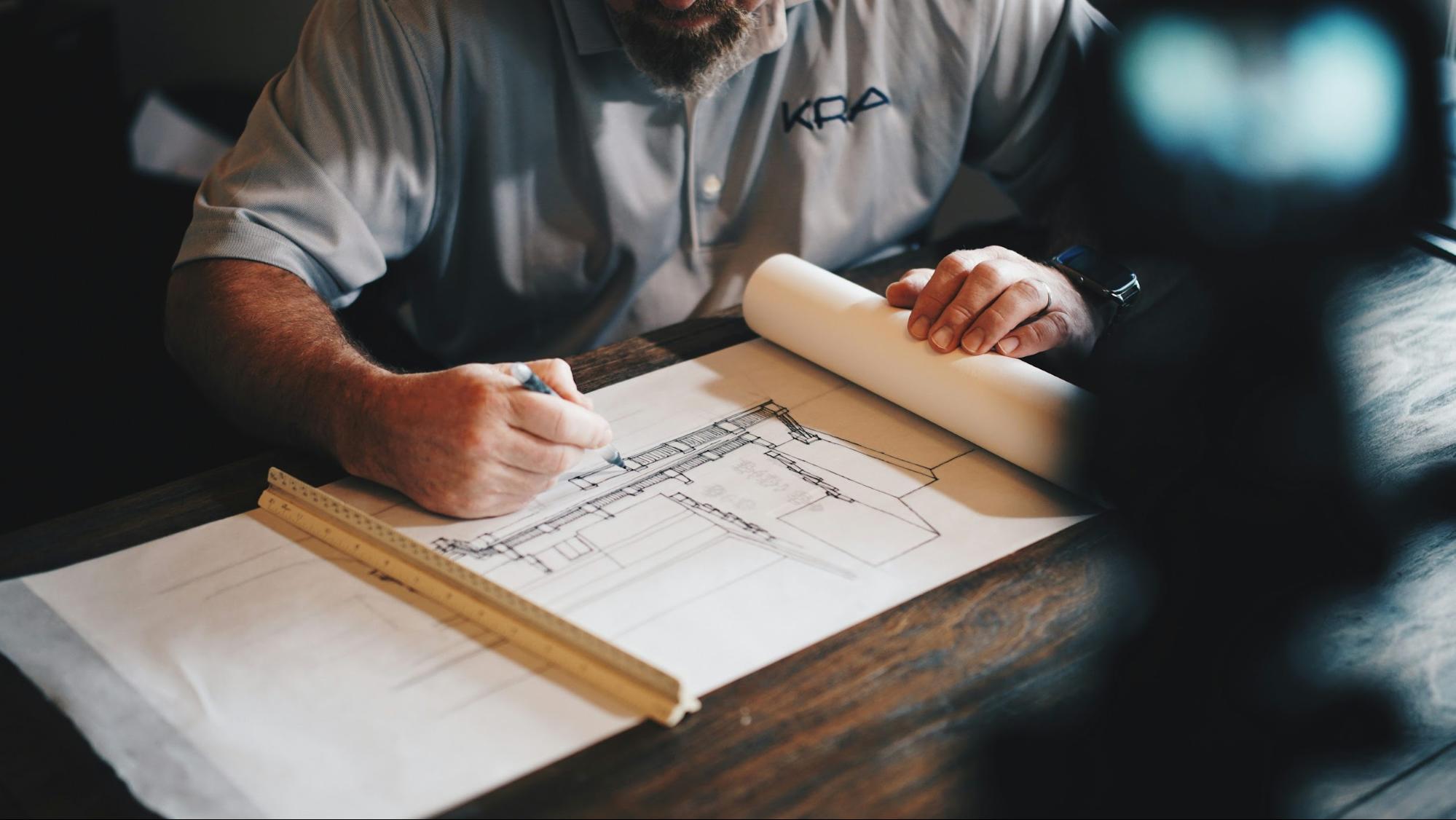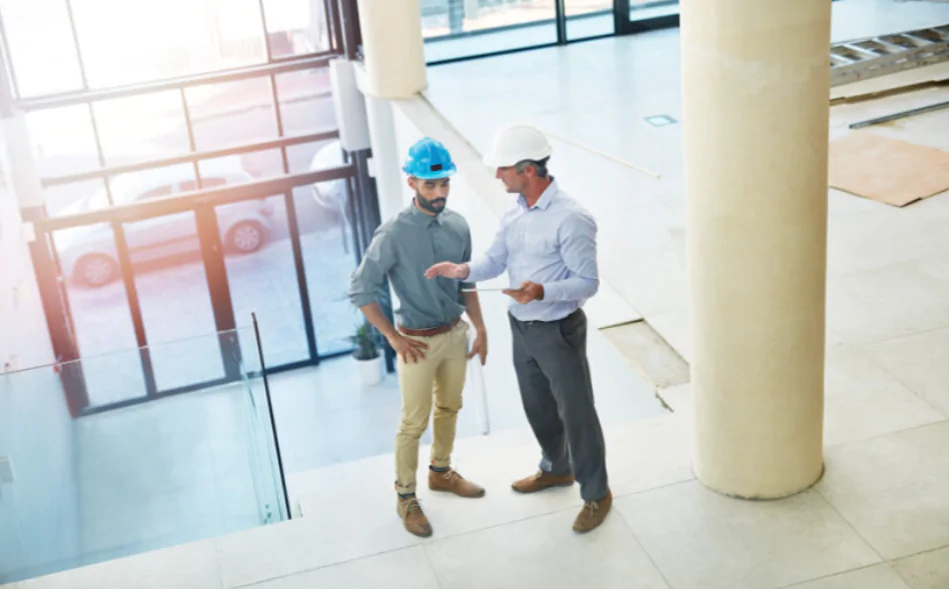
Every commercial construction project faces the same challenge: balancing cost and quality. The best way to reduce expenses isn’t by cutting corners but by embracing sustainability. Sustainable practices in commercial construction lower costs, improve efficiency, and increase property value.
Beyond compliance, businesses that invest in sustainability gain financial stability, operational efficiency, and a stronger brand reputation. These benefits position companies as industry leaders in a market that values environmental responsibility.
Understanding how sustainability impacts construction costs is essential for making the right investment decisions. This article explores how eco-friendly strategies can drive financial and operational success.
Key sustainable practices in commercial construction
Adopting sustainable practices in commercial construction enhances efficiency, lowers costs, and supports environmental responsibility. Companies implementing these strategies benefit from long-term savings and increased asset value.
Here are some of the most impactful sustainability measures in the industry:
Using LED lighting
LED (Light-Emitting Diode) technology provides superior energy efficiency and durability.
- Energy savings: LED bulbs consume up to 75% less energy than incandescent lighting, reducing electricity bills for commercial properties.
- Lifespan advantage: LEDs last approximately 25 times longer, minimizing maintenance costs and the need for frequent replacements.
- Environmental benefits: Unlike fluorescent bulbs, LEDs do not contain mercury or other harmful chemicals, making them safer for disposal and recycling.
- Smart integration: Many LED systems can integrate with motion sensors and automated lighting controls.
Reducing heating and cooling costs with smart HVAC systems
Smart HVAC technology can optimize climate control and reduce operational costs, impacting a building’s energy consumption.
- Automated adjustments: These systems use real-time occupancy sensors and environmental data to adjust temperatures efficiently, reducing unnecessary energy use.
- Zoned climate control: Smart HVAC allows for customized temperature settings in different areas of a building, ensuring optimal comfort while minimizing waste.
- Predictive maintenance: Many modern HVAC systems feature AI-driven diagnostics, detecting inefficiencies early and preventing costly repairs.
- Energy consumption reduction: Smart HVAC solutions can lower energy use by 20-30%, leading to substantial long-term cost savings.
Harnessing renewable energy with solar panels
Solar energy is one of the most impactful sustainable practices in commercial construction, stabilizing electricity costs.
- Energy independence: Solar panels generate on-site renewable power, reducing dependency on grid electricity and lowering utility expenses.
- Financial incentives: Many governments offer tax credits, rebates, and incentives for businesses that install solar energy systems.
- Lower operational costs: Although the upfront installation cost can be high, solar panels provide free electricity generated for decades.
- Grid integration & battery storage: Excess energy can be stored in battery systems or fed back into the grid, creating additional cost savings and revenue opportunities.
Optimizing thermal performance with insulation & building envelope enhancements
A well-insulated building envelope ensures efficient temperature regulation, reducing excessive heating or cooling.
- High-performance insulation materials: Advanced insulation materials such as spray foam, rigid foam, and aerogel improve energy efficiency.
- Cool roof technology: Reflective roofing materials maintain lower indoor temperatures, reducing HVAC workload in warm climates.
- Triple-glazed windows: Energy-efficient windows with low-emissivity coatings and multiple panes prevent heat loss and improve indoor climate control.
- Airtight sealing: Proper sealing of air leaks in doors, windows, and duct systems prevents unnecessary energy waste and enhances indoor comfort.
Reducing carbon footprint with recycled steel
Recycled steel provides the same structural integrity as newly produced steel, cutting environmental impact.
- Energy savings: Producing steel from recycled scrap requires 72% less energy compared to virgin steel production.
- Carbon reduction: The process emits up to 58% fewer greenhouse gases, contributing to global carbon neutrality goals.
- Durability & versatility: Recycled steel maintains the same load-bearing capacity, making it ideal for structural beams, columns, and reinforcements.
Low-carbon concrete
Concrete is a critical component in commercial construction, but its production accounts for approximately 8% of global CO₂ emissions. Innovations in low-carbon concrete reduce this impact.
- Permeable concrete: This variation improves stormwater management by allowing water to pass through, reducing runoff and urban flooding risks.
- Longevity & strength: Many low-emission concrete mixes offer enhanced crack resistance and durability, lowering maintenance and replacement costs.
Engineered wood & bamboo
Engineered wood and bamboo offer high strength, excellent durability, and a reduced carbon footprint as sustainable alternatives to traditional hardwoods.
Rapid renewability: Bamboo grows up faster than hardwood trees, making it a highly sustainable option.
Lower waste: Engineered wood maximizes material usage and minimizes waste.
Structural strength: Cross-laminated timber rivals the strength of steel and concrete while being lighter and easier to transport, reducing fuel consumption.
Integrating sustainable practices in commercial construction enhances building longevity and lowers operational costs. Choosing recycled, engineered, and repurposed materials results in greater efficiency, sustainability certifications, and future-proof investments.
Maximizing water reuse with rainwater harvesting
Capturing and repurposing rainwater is an effective way to reduce dependency on municipal water supplies. Rainwater harvesting systems collect runoff from rooftops, filter it, and store it for various non-potable applications.
- Landscaping irrigation: Provides a free and renewable water source for maintaining green spaces, reducing the need for treated municipal water.
- Cooling system support: Used in evaporative cooling towers and HVAC systems to lower indoor temperatures efficiently.
- Stormwater management: Helps prevent urban flooding by diverting excess rainwater into controlled storage, rather than overwhelming drainage systems.
Reducing waste with low-flow plumbing fixtures
Low-flow plumbing fixtures are designed to minimize water consumption in commercial restrooms, kitchens, and employee facilities without affecting usability. These include high-efficiency faucets, toilets, urinals, and showerheads that restrict water flow.
- Water savings: Low-flow toilets use as little as 1.28 gallons per flush (GPF) compared to the standard 1.6 GPF.
- Sensor-activated faucets: Ensure water runs only when needed, preventing unnecessary waste.
- Showerhead efficiency: Low-flow showerheads reduce water consumption by up to 60%, which is beneficial in commercial buildings with employee facilities or hotel accommodations.
Reusing water for non-potable applications with greywater recycling
Greywater refers to wastewater generated from sinks, showers, dishwashers, and laundry machines (water that can be filtered and reused for non-drinking purposes). Greywater recycling systems help commercial properties cut down on water waste.
- Irrigation for landscaping: Treated greywater can be used for watering plants and maintaining outdoor green spaces.
- Toilet flushing systems: Certain commercial buildings incorporate greywater-fed toilet systems.
- Cooling and industrial use: Some commercial operations repurpose greywater in mechanical systems and industrial processes.
- Environmental impact: Reduces wastewater discharge into sewage systems, lowering pollution risks.
Water scarcity and rising utility costs are growing concerns for commercial property owners. Integrating water conservation strategies not only reduces expenses but also ensures compliance with sustainability regulations.
Regulatory compliance & financial incentives: Sustainable practices in commercial construction

Compliance with sustainable practices in commercial construction ensures adherence to local and global environmental policies and opens doors to financial benefits, tax incentives, and increased property value.
LEED & Green Certifications
One of the most recognized sustainability certifications, LEED (Leadership in Energy and Environmental Design), has become a benchmark for eco-friendly construction.
LEED-certified buildings meet rigorous environmental standards, offering benefits:
- Access to sustainability grants: Some local governments prioritize green-certified projects for funding and grants, reducing upfront investment costs.
- Employee well-being & productivity: Improved indoor air quality and natural lighting in LEED buildings means higher employee satisfaction and productivity.
Beyond LEED, other global and regional green building certifications include:
- BREEAM (Building Research Establishment Environmental Assessment Method): Commonly used in Europe and Asia, focusing on sustainability in commercial real estate.
- WELL Building Standard: Prioritizes human health and well-being through sustainable building design.
- ENERGY STAR Certification: Recognized in the U.S. for energy efficiency, helping businesses reduce electricity consumption and carbon emissions.
Financial benefits for green construction with government incentives
Many local, state, and federal governments offer financial incentives to encourage the adoption of sustainable practices in commercial construction. These incentives offset initial green building investments, making sustainability a financially safe decision.
Some municipal utilities and state programs offer rebates for businesses installing energy-efficient lighting, HVAC systems, water conservation systems, and solar panels.
Green construction projects in designated sustainability districts may qualify for grants covering a portion of development costs.
Also, some states offer low-interest green construction loans, making sustainable projects more accessible.
By meeting green building standards, accessing tax benefits, and reducing carbon footprints, businesses can:
- Reduce long-term costs through energy savings and tax breaks.
- Increase property marketability to eco-conscious tenants and investors.
- Ensure regulatory compliance while avoiding costly penalties.
- Improve brand reputation by demonstrating environmental leadership.
Initial costs vs. Long-term savings: Sustainable practices in commercial construction
Investing in these sustainable practices in commercial construction requires an upfront commitment, but the long-term financial benefits outweigh the initial costs.
Businesses that integrate green solutions benefit from lower operational expenses, improved asset longevity, and higher market appeal. Energy-efficient systems provide some of the most significant cost reductions.
Several projects demonstrate the economic impact of sustainable practices in commercial construction. A study on buildings with green certifications found energy cost reductions of 30 to 97%. These savings accumulate over the years, making sustainability a high-return investment.
To remain financially viable, businesses need strategies that anticipate rising energy costs and evolving regulations. Companies that invest in sustainable practices in commercial construction today secure long-term cost stability and greater resilience in an increasingly eco-conscious market.
Efficient resource management: Sustainable practices in commercial construction

Efficient use of materials, energy, and water lowers costs and minimizes environmental impact. Businesses can improve project efficiency and reduce waste by implementing smart resource management strategies.
One of the most effective ways to optimize resource use is by reducing material waste. Recycling construction materials lowers expenses and reduces landfill impact. Prefabrication and modular construction produce components off-site, minimizing on-site waste and cutting labor costs.
Smart energy management systems monitor and optimize energy consumption, ensuring that buildings operate at peak efficiency. Similarly, water-saving technologies like low-flow plumbing fixtures and rainwater harvesting systems reduce water usage and utility costs.
These innovations make sustainable practices in commercial construction practical and financially beneficial.
Technology-driven solutions help streamline resource management. Building Information Modeling (BIM) software enhances planning accuracy, reducing material waste. Automated energy monitoring systems identify inefficiencies, allowing real-time adjustments.
Businesses can achieve long-term success and improve their bottom line by implementing intelligent resource management strategies.
Prioritizing sustainable practices in commercial construction means reducing waste, lowering costs, and improving efficiency across every stage of a project.
Explore Goveias Construction’ portfolio of sustainable projects to see how resource management transforms commercial construction.
Increasing project value through sustainability
In addition to reducing expenses, sustainable practices in commercial construction also increase the value of a commercial construction project. Investors, tenants, and clients prioritize environmentally responsible buildings due to their long-term financial and operational benefits.
LEED-certified buildings meet stringent sustainability standards, making them more attractive to investors and tenants. These properties typically command higher rental rates and experience lower vacancy levels.
Sustainable practices in commercial construction are also essential in project desirability. Features like natural lighting, improved air quality, and smart energy systems create healthier, more productive environments.
Businesses that invest in eco-friendly construction today secure financial gains and build a strong brand reputation in an increasingly sustainability-focused world.
Future-proof your business with sustainable practices in commercial construction
The benefits of sustainable practices in commercial construction extend far beyond environmental responsibility. They drive cost savings, energy efficiency, and long-term asset value, making sustainability an essential strategy for forward-thinking businesses.
Sustainable practices in commercial construction are a smart investment in long-term profitability and resilience.
At Goveias Construction, we specialize in delivering eco-friendly commercial projects that align with the latest sustainability innovations. Whether you’re looking to reduce carbon footprints, optimize resource management, or leverage financial incentives, our expert team is ready to guide you through every step of the process.
Discover how to make your commercial project sustainable with Goveias. Contact us today to explore customized sustainability solutions that maximize efficiency and reduce costs.




